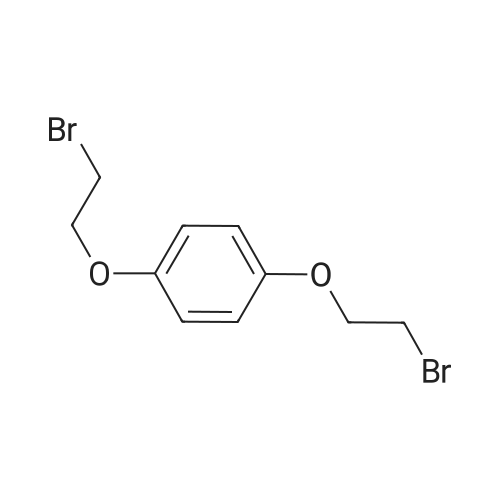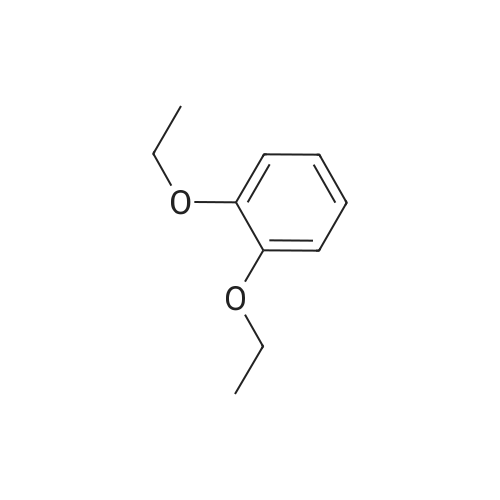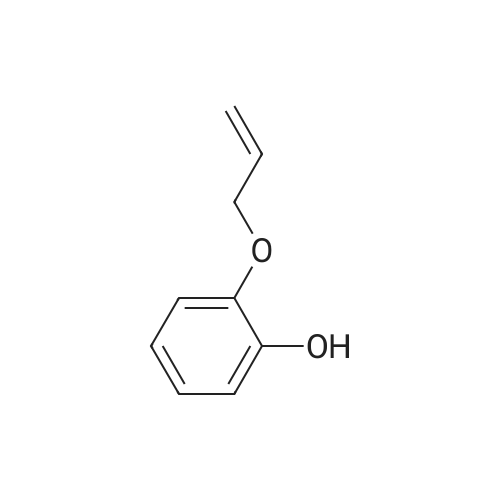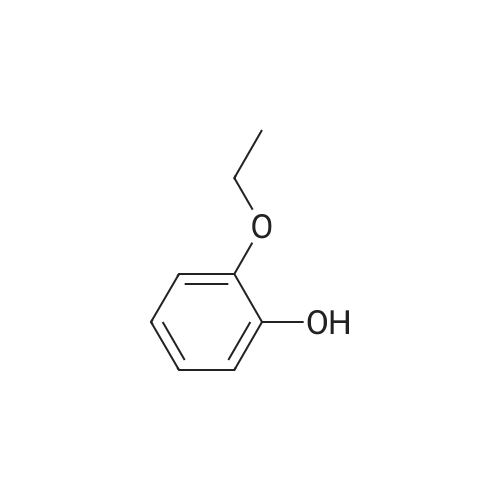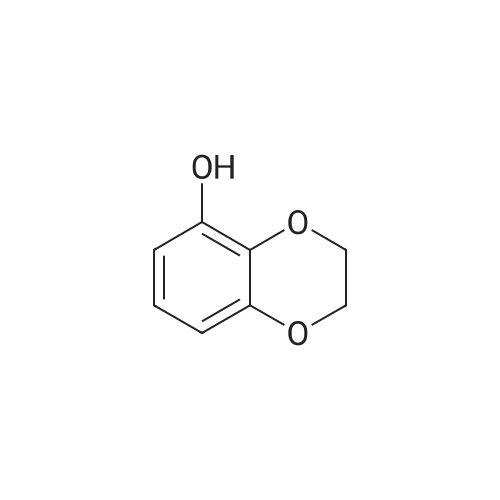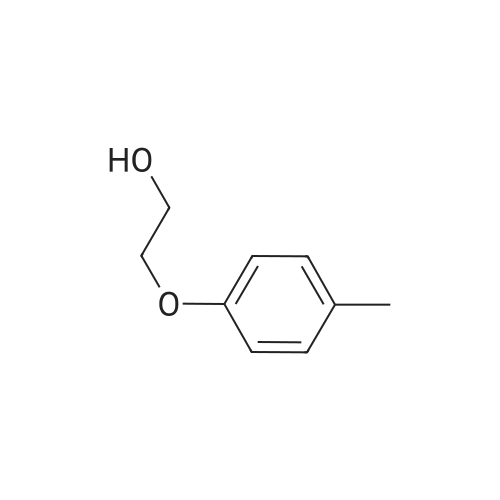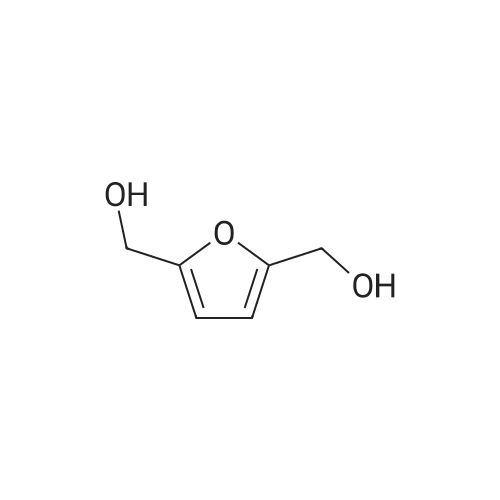| 82.7% |
With carbon tetrabromide; triphenylphosphine; In acetonitrile; at 20℃; for 12h;Cooling with ice; |
A solution of 4-bis(2-hydroxyethoxy) benzene (6.0 g,30 mmol) and triphenylphosphine (18.9 g, 72.1 mmol) indry acetonitrile (200 mL) was cooled with an ice bath.Under vigorous stirring, carbon tetrabromide (24.0 g,72.4 mmol) was slowly added. The mixture was stirred atroom temperature for 12 h. Then cold water (200 mL) wasadded to the reaction mixture to give white precipitation. The precipitate was collected, washed with methanol/water(3:2, 3 9 100 mL), recrystallized from methanol, anddried under vacuum to afford 1 as white crystals, 82.7%(14.5 g). 1H NMR (600 MHz, CDCl3): d = 6.86 (s, 4H),4.24 (t, J = 6.3, 4H), 3.61 (t, J = 6.3, 4H) ppm. |
| 80% |
|
1,4-Bis(hydroxyethoxy)benzene (5.00 g, 25.2 mmol) andtriphenylphosphine (15.00 g, 60 mmol) were stirred inCH3CN and cooled to 0 C. Carbon tetrabromide (20.00 g,60 mmol) was slowly added in small portions to a solutionwith stirring while maintaining 0 C. The reaction mixturewas then left to warm to room temperature and theresulting clear solution was stirred for a further 4 h undera nitrogen atmosphere. Cold distilled water (100 ml) wasadded to precipitate a white solid that was collected byvacuum filtration and recrystallised from hot methanol(200 mL). 1,4-Bis(bromoethoxy)benzene was isolated aswhite flake-like crystals following vacuum filtration. Yield:6.54 g (80%); m.p.: 112.7-115.6 C; 1H NMR (400 MHz,CDCl3) δ (ppm): 6.85 (s, 4H, ArH), 4.23 (t, 4H, -CH2O), 3.59(t, 4H, -CH2Br); 13C NMR (90 MHz, CDCl3) δ (ppm): 152.89,116.17, 68.81, 29.19. HRMS (m/z): calcd for C10H12Br2O2·NaC2HO2, 391.9063; found, 391.9195. Note: the molecular ioncould not be detected for this compound and was alwaysobserved as the sodium orthoformate complex. |
| 79.2% |
With carbon tetrabromide; triphenylphosphine; In acetonitrile; at 0 - 20℃; for 24h; |
Add hydroquinone dihydroxy ether and triphenylphosphine to acetonitrile (or acetone) in a molar ratio of 1:3, At 0C, add carbon tetrabromide in batches (the molar ratio of hydroquinone dihydroxy ether to carbon tetrabromide is 1:3), and continue stirring for 24h at room temperature It is quenched by adding deionized water, filtered, washed, and separated by column chromatography to obtain 1,4-bis(2-bromoethoxy)benzene as a white powder. It is also possible to add deionized water to quench the reaction, filter with suction and wash with a mixed solution of methanol and water to obtain 1,4-bis(2-bromoethoxy)benzene. |
|
With carbon tetrabromide; triphenylphosphine; In acetonitrile; at 0 - 25℃; for 4h;Inert atmosphere; |
In a round bottom flask (500 mL), 1,4-di(2-hydroxyethoxy)benzene (5 g, 25 mmol) and triphenylphosphine (15.7 g, 60 mmol) were weighed and dissolved in anhydrous acetonitrile (120 mL), then, while maintaining the temperature at 0 C, carbon tetrabromide (19.9 g, 60 mmol) was slowly added to the above system. Then, the temperature was raised to room temperature at 25 C, and stirred under nitrogen for 4 hours. After completion of the reaction, ice-water (200mL) was added to the system, the product was precipitated, the solid was obtained by filtration and washed 3-4 times with methanol/water (3:2, 3×100 mL), and the crude product was recrystallized from methanol for further purification to give a pure product |
|
With carbon tetrabromide; triphenylphosphine; In acetonitrile; at 0 - 25℃; for 4h;Inert atmosphere; |
In a round bottom flask (500 mL), 1,4-bis(2-hydroxyethoxy)benzene (5 g, 25 mmol) and triphenylphosphine (15.7 g, 60 mmol) were weighed and dissolved in anhydrous acetonitrile (120 mL) Then, while maintaining the temperature at 0 C, carbon tetrabromide (19.9 g, 60 mmol) was slowly added to the above system. Then, the temperature was raised to room temperature at 25 C, and stirred under nitrogen for 4 hours. After completion of the reaction, ice water (200 mL) was added to the system to precipitate a product. The solid was obtained by filtration and washed 3-4 times with methanol/water (3:2, 3×100 mL). The crude product was recrystallized from methanol for further purification to give a pure product. |
| 14.5 g |
With carbon tetrabromide; triphenylphosphine; In acetonitrile; at 20℃; for 4h;Cooling with ice; |
(1) 10 g of hydroquinone di(2-hydroxyethyl)ether, 31.5 g of triphenylphosphine, and 250 mL of anhydrous acetonitrile were sequentially placed in a round bottom flask.After cooling with an ice water bath, and stirring and stirring, 39.8 g of carbon tetrabromide was added, and the reaction was stirred at room temperature for 4 hours.After the reaction was completed, 200 mL of cold water was added to the mixture to quench the reaction to obtain a white precipitate, which was collected by filtration.It was washed 3 times with an aqueous methanol solution (volume ratio of 3:2), recrystallized from methanol, and dried, white crystals, 14.5 g, |
|
With carbon tetrabromide; triphenylphosphine; In acetonitrile; at 20℃; for 4h; |
General procedure: Synthesis of tetramer and the following substances according to previously reported procedures.1-3 The raw material 1 (10 g, 50.4 mmol) was added to MeCN (250 ml) under ice bath and then stirred for a few minutes to dissolve the raw material. Triphenylphosphine (31.5 g, 120 mmol) continues to be added to the mixture and stirred for a few minutes. Then, slowly add dropwise carbon tetrabromide (39.8 g, 120 mmol) to the reaction solution, and after stirring for a while, the ice bath is removed and stirred at room temperature for 4 h. The addition of 200 ml water resulted in a precipitate. The precipitate washed by MeOH/H2O (100 ml2, V: V=3:2). Finally wash with methanol (70 ml2) to obtain product 2 as a white solid. The tetramer (3.24 g, 4.15 mmol) was dissolved in trifluoroacetate (35 ml), followed by adding the product 2 (4.59 g, 14.17 mmol). The mixture was stirred for 3 h at 70 after removal of the trifluoroacetate by distillation under reduced pressure. The obtained solid was washed with methanol (300 ml) and acetone (400 ml). The product 3 was obtained as a white solid by vacuum drying (3.52 g, 82%). 1H NMR (600 MHz, DMSO): 6.91 (s, 4H), 5.59 (d, J = 14.4, 2H), 5.51 (d, J = 15.2, 4H), 5.38 (d, J = 9.0, 2H),5.30-5.25 (m, 6H), 4.50-4.40 (m, 4H), 4.25-4.20 (m, 10H), 4.06 (d, J = 15.2, 4H), 3.90-3.80(m, 8H), 1.69 (s, 6H), 1.66 (s, 6H). The product 3 (3.5 g, 2.51 mmol) was dissolved in DMSO (35 ml), followed by adding sodium azide (1.96 g, 30.15 mmol). The mixture was stirred for 12 h at 80. Then pour the reaction solution into water to obtain a precipitate. The precipitate was washed with methanol (350 ml) to obtain product 4 as a white solid (3.10 g, 97%). 1H NMR (600 MHz, DMSO): 6.88 (s, 4H), 5.57 (d,J = 14.6, 2H), 5.47 (d, J = 15.1, 4H), 5.37 (d, J = 8.7, 2H), 5.25 (d, J = 8.7, 2H), 5.24 (d, J =16.1, 4H), 4.25 - 4.20 (m, 4H), 4.14 (d, J = 16.1, 4H), 4.15 - 4.05 (m, 4H), 4.05 (d, J = 14.6,4H), 4.03 (d, J = 15.1, 2H), 3.85-3.75 (m, 4H), 3.55-3.45 (m, 4H), 1.69 (s, 6H), 1.66 (s, 6H). The product 4 (2.5 g, 2.01 mmol) was dissolved in mixed solvent of DMSO and H2O (80 ml and 8 ml), followed by adding triphenylphosphine (4.18 g, 15.94 mmol). The mixture was stirred for 6 h at 80. The reaction solution was adjusted to pH 1 with HCl (6 mol), and then the reaction solution was poured into acetone (400 ml) to obtain a white precipitate. The white precipitate was washed with acetone (300 ml). The white precipitate was dissolved with a minimum amount of water and then acetone (120 ml) was added to obtain a white precipitate which was repeated twice to give a host-2 as a white solid (1.23g, 43%). 1H NMR (600 MHz, D2O): 6.44 (s, 4H),5.58 (d, J = 15.3, 2H), 5.52 (d, J = 15.8, 4H), 5.46 (d, J = 9.2, 2H), 5.28 (d, J = 9.2, 2H), 5.27(d, J = 16.5, 4H), 4.31 (d, J = 15.8, 4H), 4.29 (d, J = 16.5, 4H), 4.13 (d, J = 15.3, 2H), 3.85 -3.75 (m, 4H), 3.65-3.55 (m, 4H), 3.350-3.10 (m, 8H), 1.78 (s, 6H), 1.77 (s, 6H). |
|
With carbon tetrabromide; triphenylphosphine; In acetonitrile; at 20℃; for 4h; |
Add hydroquinone bis(2-hydroxyethyl) ether (1.98 g, 0.01 mol), after the hydroquinone bis(2-hydroxyethyl) ether is completely dissolved, add carbon tetrabromide (13.24 g, 0.04 mol), triphenylphosphine (5.24 g, 0.02 mol), the reaction solution was reacted at room temperature for 4 h. After the reaction is over, add pure water (200 mL) to the reaction solution In the process, a white precipitate is produced, and the precipitate is vacuum filtered to obtain a crude product; the crude product is washed 3 times with methanol/water (volume ratio 3:2), each After 100 mL, the pure product is obtained. Dry in a vacuum drying oven to obtain a white solid, and finally prepare bromobenzene ring side arms |

 Chemistry
Chemistry
 Pharmaceutical Intermediates
Pharmaceutical Intermediates
 Inhibitors/Agonists
Inhibitors/Agonists
 Material Science
Material Science















 For Research Only
For Research Only
 120K+ Compounds
120K+ Compounds
 Competitive Price
Competitive Price
 1-2 Day Shipping
1-2 Day Shipping





